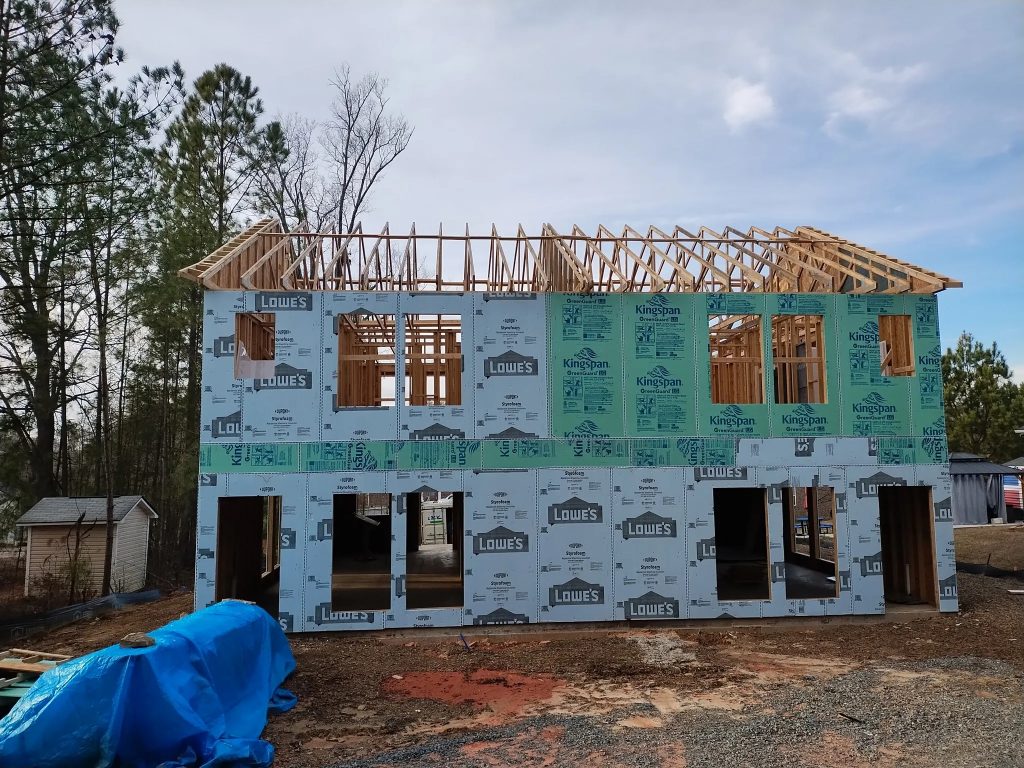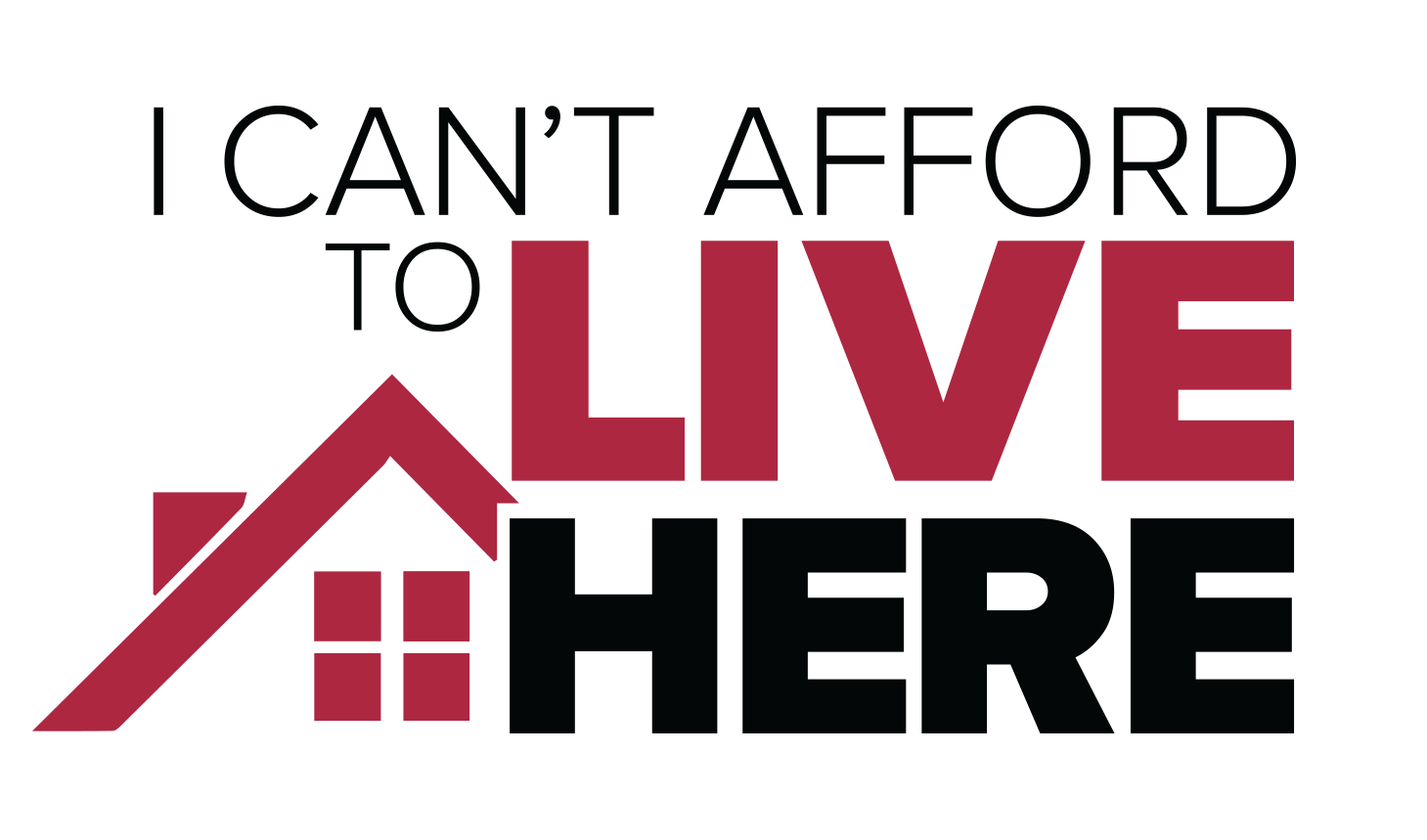
Site of Veterans Community Project, Longmont, Colo. (Photo Credit: Chris Rudisill)
By Chris Rudisill
FEBRUARY 7, 2020
In the last issue of qnotes, we looked at the Beloved Community Village in Denver, a tiny home village that provides transformational housing for people experiencing homelessness. Our trip out west also took us to Longmont, Colo. to visit the future home of the Veterans Community Project.

Site of Veterans Community Project, Longmont, Colo. (Photo Credit: Chris Rudisill)
Founded in Kansas City, the Veterans Community Project’s (VCP) mission is dedicated to supporting every man and woman who took the oath for our country. According to its website, “they are determined to make a difference in the lives of homeless veterans, a task accomplished by the community for the community.” Their original project of 49 homes and a 5,000-square foot community center in Kansas City was completed in December, and now the organization is on target to expand to a total of eight cities across the United States by 2022. The first home was built in Kansas City in 2016 with the first 13 veterans moving in at the beginning of 2018. Two years later, they completed the final home and community center with everything from a dental office to veterinary clinic. Chief Project Officer Brandonn Mixon told KSHB that the group is far from being done, however. “Our mission is not done until we solve homelessness for every veteran in the United States.” Reports vary widely on the number of veterans who experience homelessness, but the U.S. Department of Housing and Urban Development (HUD) estimates that 40,056 veterans are homeless on any given night.
In 2018, the city of Longmont, Colo. passed a resolution supporting Mayor Brian Bagley’s “Challenge to End Homelessness.” That year, the city held community events where participants identified service gaps and discussed creative solutions. A 2017 Point-in-Time (PIT) count found 480 individuals experienced homelessness in Boulder County. Over 25 percent identified as chronically homeless and 32 percent said that the inability to pay rent or mortgage was a contributing factor to their housing instability. The average home price in Longmont is $490,000 ($300,000 for a first-time buyer) and monthly rent for a one-bedroom apartment is $1,480.
 The Point-In-Time, or PIT Count, is an unduplicated estimate of individuals experiencing homelessness on a given night in January. HUD requires a sheltered (emergency shelter or transitional housing) count every year and an unsheltered (living on the street or unfit for human habitation) count every other year to receive federal funds for supportive programs.
The Point-In-Time, or PIT Count, is an unduplicated estimate of individuals experiencing homelessness on a given night in January. HUD requires a sheltered (emergency shelter or transitional housing) count every year and an unsheltered (living on the street or unfit for human habitation) count every other year to receive federal funds for supportive programs.
Charlotte-Mecklenburg started performing both a sheltered and unsheltered survey each year in 2018. The latest count took place on Jan. 29 and Mecklenburg County Community Support Services has also released a Housing Data Snapshot called “One Number” each month since June. According to its website, “The One Number is a count of the total number of individuals and households within one list who are experiencing homelessness and in need of housing in Charlotte-Mecklenburg.” The number is generated from data in the Homeless Management Information System and provides a more comprehensive view than the one-night snapshot of the PIT Count. As of Dec. 31, there were 3,569 individuals actively experiencing homelessness in Charlotte-Mecklenburg. That number is an increase of 1,463 since the first “One Number” report released in June. In addition, there are approximately 80,000 people with housing instability in Charlotte — which is defined as a person who could be one missed paycheck away from homelessness.
Starting a Collaboration

Veterans Community Project Co-Founder Mark Solomon. (Photo Credit: Chris Rudisill)
“The city of Longmont reached out to us,” says Mark Solomon, co-founder of the Veterans Community Project and executive director of the Colorado expansion. After the city declared they wanted to end homelessness, they organized a coalition to try and figure out how to do it. Along with Kevin Mulshine, a partner of the private housing development corporation HMS Development, the city toured the Kansas City project to learn more.
Mulshine and others were drawn to the project, and HMS donated land as part of a 67-acre project surrounded by business parks and suburban retail to launch the first expansion of the Veteran’s Community Project. The two-acre site sits about 13 miles northeast of Boulder and is part of a larger development that will feature single-family homes, townhomes and condos ranging from $350,000 to $900,000 built by HMS, along with eight Habitat for Humanity homes. There will be 26 tiny homes and a 3,000-square foot community center. “It’s going to be the only place in the country, that I know of, which will have homeless people, on purpose, living next to a high-end subdivision,” says Solomon.
The project is proving to be a good move for developers from an altruistic standpoint as well as a business one. “He thinks one of the amenities communities will have (in the future) will be compassion,” says Solomon referring to HMS Development.

Site plan for the village. (Photo Credit: Veterans Community Project)
Economically, the project also positively impacts the city’s overall property values. Solomon points out they purchased five acres of land in Kansas City from the municipality for $500 and it had a retail value of roughly $40,000. Now four years later, the land has reappraised for $1.5 million. “So, we moved homeless people to an area of town and raised the property value,” says Solomon. The city of Longmont is also allowing HMS Development to fast track many of its permits. They still must meet the same requirements, but instead of a three-year process, Solomon estimates that the city has put resources together to make it happen within 18 months. The donation of land to both this project and Habitat for Humanity will allow the developer to sell more of the high-end homes at full retail and still fulfill housing affordability requirements imposed by the city. “Everyone gets to win in this and it’s a partnership between all of us,” says Solomon. According to the city of Charlotte, the city needs an additional 24,000 units of affordable housing to meet the current need, which means more than 55,000 Charlotteans don’t currently have an affordable place to live. As the city’s website states “that’s three-quarters of the Panthers stadium.” How can tiny home villages and community, city, and business partnerships create opportunity?
The tiny homes in Longmont are zoned as multi-family units in some cases and treated as individual units in others giving it the flexibility to exist within current zoning codes in the city — virtually breaking the molds that have created barriers for other projects across the country.
Like the Beloved Community Village in Denver, the concept is proving to also be a more affordable solution to address homelessness. “People are looking at tiny houses and saying ‘hey, we can do this,’” says Solomon. “It’s relatively inexpensive to do.” The cost per house at VCP is estimated at $35,000 which includes the cost of housing a veteran for one full year. Veterans can stay for up to two years and one day. The project is privately funded and accepts no federal money so it has the flexibility to serve any veteran, despite status and without a ton of conditional paperwork. “We basically have said that anyone who took the oath, at some point, vowed to defend the Constitution against all enemies both foreign and domestic, up to and including their lives deserves this chance,” says Solomon. “It doesn’t matter if you served for five minutes or five years, at some point, you were willing to give up your life for our country. That’s good enough for us.”
Solomon has served in the Navy for over 15 years, was in Iraq for one year, and expects that he is likely to deploy again this summer. All the founders of the Veterans Community Project are combat veterans.
Let’s Take a Look Inside
Homes range from 240-320 square feet and are fully-functional units with a kitchen, bathroom and living quarters all on a permanent concrete slab foundation. The village is designed to look like a subdivision. Solomon calls it “housing with dignity.” The houses will also be designed with granite countertops, a tile backsplash, hardwood floors, modular furniture, high-speed internet and Chromebook computers.
Google is just one example of the corporate partnerships that VCP has successfully forged since its launch. “We partner with the community on a lot of things, so we have folks that come in and help our vets learn how to cook and how to clean,” says Solomon. Bank of America teaches budgeting classes, and on-site case managers work with residents to budget for their expenses. Solomon acknowledges that there are some definite advantages to the veteran aspect of their project. “It’s hard for people to say no to veterans,” he says. The organization works hard to increase partnerships that don’t equal free product, however, but negotiate pricing to increase their opportunities in more cities across the country.

Housing elevation design. (Photo Credit: Veterans Community Project)
The tiny homes at VCP focus on four major aspects for those served by the program. They create an environment where families can be together. They acknowledge the specific issues faced by veterans, including the design of windows and doors in each unit. They realize that every villager has shared experiences, and they create a culture of group accountability.
Karen served in the Coast Guard for two years beginning at the age of 18 in 1978. After her children grew up, she left an abusive marriage and lost her home. She moved into the Village in Kansas City and it took her three months to unpack. She didn’t think it would work. She’d been through programs and they didn’t really help her in the past. Her role as a mother figure and leader, however, caused others to follow her actions. “If she wasn’t unpacking, others weren’t either,” says Solomon. Just over a year later, Karen would move out of Veterans Community Village and others would see those same boxes moving out. They’d start to envision how they could also move out on their own, and into stable affordable housing.
It all goes back to mission and unit cohesion, two concepts familiar to anyone who has served in the military. “I just wanted to say yes to vets — that was the goal,” says Solomon. “Fast forward and we realize, this is obviously bigger. How do we think big, doing it in a small way? Everything we do is big impact, small footprint. How do we do that? How do you do more with fewer troops?”
 This story was produced by the Charlotte Journalism Collaborative, a partnership of six media companies working together in an effort started by the Solutions Journalism Network and funded by The Knight Foundation.
This story was produced by the Charlotte Journalism Collaborative, a partnership of six media companies working together in an effort started by the Solutions Journalism Network and funded by The Knight Foundation.












